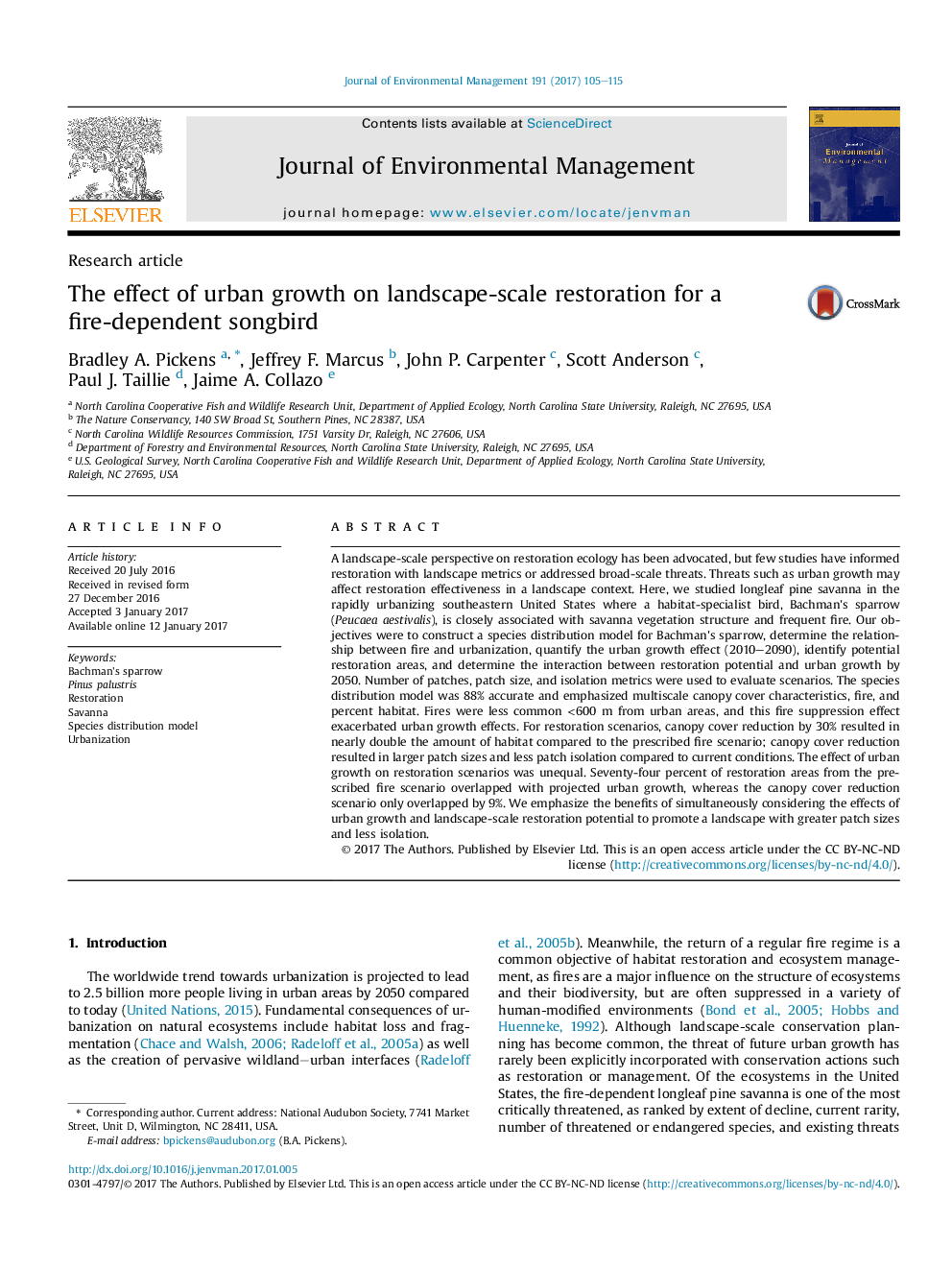| کد مقاله | کد نشریه | سال انتشار | مقاله انگلیسی | نسخه تمام متن |
|---|---|---|---|---|
| 5116777 | 1485224 | 2017 | 11 صفحه PDF | دانلود رایگان |
- The distribution of a fire-dependent bird is characterized with remote sensing.
- We examine landscape-scale restoration and urban growth scenarios.
- Restoration scenarios differentially modify habitat patch size and isolation.
- The incorporation of urban growth alters where restoration should be considered.
A landscape-scale perspective on restoration ecology has been advocated, but few studies have informed restoration with landscape metrics or addressed broad-scale threats. Threats such as urban growth may affect restoration effectiveness in a landscape context. Here, we studied longleaf pine savanna in the rapidly urbanizing southeastern United States where a habitat-specialist bird, Bachman's sparrow (Peucaea aestivalis), is closely associated with savanna vegetation structure and frequent fire. Our objectives were to construct a species distribution model for Bachman's sparrow, determine the relationship between fire and urbanization, quantify the urban growth effect (2010-2090), identify potential restoration areas, and determine the interaction between restoration potential and urban growth by 2050. Number of patches, patch size, and isolation metrics were used to evaluate scenarios. The species distribution model was 88% accurate and emphasized multiscale canopy cover characteristics, fire, and percent habitat. Fires were less common <600Â m from urban areas, and this fire suppression effect exacerbated urban growth effects. For restoration scenarios, canopy cover reduction by 30% resulted in nearly double the amount of habitat compared to the prescribed fire scenario; canopy cover reduction resulted in larger patch sizes and less patch isolation compared to current conditions. The effect of urban growth on restoration scenarios was unequal. Seventy-four percent of restoration areas from the prescribed fire scenario overlapped with projected urban growth, whereas the canopy cover reduction scenario only overlapped by 9%. We emphasize the benefits of simultaneously considering the effects of urban growth and landscape-scale restoration potential to promote a landscape with greater patch sizes and less isolation.
Journal: Journal of Environmental Management - Volume 191, 15 April 2017, Pages 105-115
